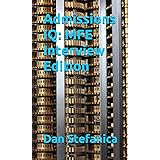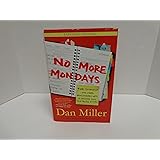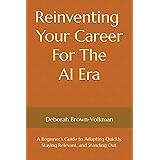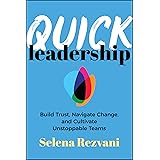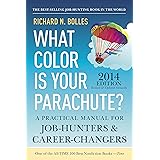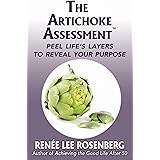Imagine the butterflies in your stomach, the clammy hands, and the nervous tremor in your voice as you walk into a crucial job interview. Even the most seasoned professionals can experience this palpable anxiety. However, with thoughtful preparation, the apprehension can be managed, allowing your true capabilities to shine through. While the accompanying video provides excellent, concise advice on tackling the most common job interview questions, this supplementary guide aims to deepen your understanding and equip you with an even more robust toolkit for success.
Mastering the art of answering job interview questions is not merely about reciting prepared statements; conversely, it involves demonstrating self-awareness, strategic thinking, and a genuine fit with the prospective employer’s culture. In this comprehensive guide, key strategies are expanded upon, offering further insights into crafting impactful responses that truly differentiate you in a competitive talent market.
Deconstructing “Tell Me About Yourself”: A Professional Narrative
The ubiquitous request, “Tell me about yourself,” is frequently perceived as an open invitation to ramble, yet it is intended as an opportunity for strategic self-introduction. This question is not a request for your life story, nor is it a cue for personal anecdotes about hobbies; instead, it serves as a professional gateway. A concise, compelling overview of your professional journey, typically lasting one to three minutes, is expected.
A structured approach is often recommended. This involves highlighting key roles and accomplishments that align directly with the target position, essentially crafting a professional narrative. Imagine if an interviewer could instantly see a clear through-line from your past experiences to their present needs; this is the objective. Your response should culminate in a statement explaining precisely why you are enthusiastic about this specific opportunity and how your skills converge with the role’s requirements, firmly anchoring your presence in the room.
Navigating Behavioral Questions with the STAR Method
Behavioral interview questions, often prefaced with “Tell me about a time when…”, are fundamental tools for talent acquisition specialists. These inquiries are designed to elicit past performance indicators, which are widely believed to be the best predictors of future success. While various acronyms like CAR (Challenge, Action, Result) or PAR (Problem, Action, Result) exist, the STAR method (Situation, Task, Action, Result) is frequently considered the gold standard for structuring these responses.
The Nuances of the STAR Framework
Effective application of the STAR method necessitates a precise understanding of each component. The ‘Situation’ establishes the backdrop, providing essential context for the narrative; it answers who, what, where, and when. The ‘Task’ delineates the specific objective or challenge presented within that situation, clarifying what needed to be accomplished.
Crucially, the ‘Action’ component details *your* specific contributions and the steps you undertook to address the task. It is vital to use “I” statements rather than “we,” clearly articulating your individual agency and decision-making process. The ‘Result’ is perhaps the most significant element, quantifying the outcome of your actions and, ideally, linking it to broader organizational benefits. Imagine if a result could not be clearly articulated; the impact of your actions would be diminished, leaving the interviewer to infer outcomes.
Addressing the “Greatest Weakness” Conundrum
Despite its perceived antiquity, the question “What’s your greatest weakness?” persists in many job interviews, particularly for entry-level roles or new team integrations. This is not a trap to disqualify candidates; rather, it is a test of self-awareness, honesty, and a demonstrable growth mindset. Avoiding clichés, such as “I’m too much of a perfectionist,” is paramount, as such responses often lack authenticity and depth.
A strategic response involves identifying an authentic weakness that is not a core competency for the position. For example, if a role demands extensive public speaking, articulating shyness as a weakness would be counterproductive. Instead, select a weakness that, while genuine, can be mitigated or is actively being improved upon. It is believed that showcasing your proactive efforts to address the weakness, demonstrating a commitment to personal and professional development, is the true intent behind the question. For instance, Cassandra mentioned being highly opinionated but outlined strategies for active listening and creating space for others; this demonstrates self-reflection and actionable improvement.
Articulating “Why Our Company?”: Beyond Surface-Level Interest
When asked, “Why are you interested in our company?”, a truly impactful answer extends far beyond a superficial admiration for the brand. This question assesses the depth of your research and your alignment with the organization’s ethos. It is expected that candidates demonstrate a genuine enthusiasm, rooted in an understanding of the company’s mission, vision, and core values.
Connecting your personal and professional values to specific aspects of the company’s public-facing statements or strategic initiatives is essential. Imagine if your response could weave in a direct quote from their annual report or an initiative highlighted on their careers page; such details illustrate thorough preparation. This deep dive into their employer branding not only showcases your diligence but also conveys a genuine interest in contributing to their specific organizational trajectory.
Framing Your Departure: “Why Are You Leaving?” Positively
The question concerning your reasons for leaving or having left a previous position can induce significant anxiety, yet a confident and concise response is often most effective. The key imperative is to maintain a positive and forward-looking perspective, irrespective of any challenging circumstances that may have prompted your departure. Dwelling on past workplace grievances, such as toxic colleagues or unsupportive management, is universally discouraged, as such narratives often reflect poorly on the candidate.
Instead, focus is frequently shifted towards aspirations for growth, new challenges, or a desire for an environment that better aligns with your long-term career objectives. For instance, explaining that you have exhausted promotional opportunities in your previous role, or that this new position offers unique learning avenues not available elsewhere, provides a positive rationale. It is often observed that brevity and unwavering confidence in your positive framing will allow the conversation to progress smoothly to subsequent questions.
Navigating Long-Term Career Goals: Realistic Ambition
Inquiries about your long-term career goals or where you envision yourself in five years are often perceived as demanding highly specific, grand career plans. However, for many roles, particularly at entry or mid-levels, a broad and adaptable response is generally preferred. Specific, rigid timelines or overly ambitious declarations (e.g., “I expect to be a manager in two years”) can sometimes be interpreted as a lack of understanding of typical career progression within an organization or even a potential lack of long-term commitment.
It is often advisable to express a desire for continuous learning, skill development, and vertical or horizontal growth within the department or company. Imagine if your goals demonstrated a commitment to becoming an integral, evolving asset to their team; this is the desired perception. Aligning your aspirations with potential growth paths offered by the company, such as becoming a senior individual contributor or eventually leading projects, is a more realistic and appealing approach.
Teamwork and Collaboration: Highlighting Your Role
Questions revolving around teamwork and collaboration are standard, especially in environments prioritizing cross-functional synergy. These behavioral inquiries require a STAR-structured response, but with a specific emphasis on your individual contribution within a collective effort. It is not sufficient merely to recount a team project; rather, your specific role, actions, and impact within that team must be articulated.
When constructing your response, context is key. Clearly outline the team’s composition, its overarching goal, and how responsibilities were distributed. Your ‘Action’ segment should detail how you actively collaborated, communicated, and contributed to fostering a positive and productive team environment. It is often appreciated when a candidate describes how they supported team members, facilitated discussions, or navigated group dynamics, ultimately leading to a successful ‘Result’.
Overcoming Challenges: Explaining the “Why”
Questions about challenging situations, difficult clients, or demanding managers are another common type of behavioral inquiry. Candidates are often expected not only to describe the challenge and their actions but, crucially, to elaborate on *why* the situation was challenging. It is believed that an interviewer needs this context to fully appreciate the complexity and your problem-solving capabilities. For instance, simply stating a project had a “tight deadline” is insufficient; explaining that “a task typically allocated three weeks had to be completed in five days” provides the necessary perspective.
Your ‘Action’ should detail the steps taken to mitigate the difficulty, diffuse tension, or navigate the obstacle. However, the ‘Result’ section is particularly critical here. It is not enough to simply state the project was completed; rather, it is important to convey the resolution’s impact, how relationships were managed, or what specific positive outcomes were achieved. Imagine if the result focused on lessons learned or improved processes; such an outcome underscores a reflective and growth-oriented mindset.
Demonstrating Adaptability in a Dynamic World
In today’s rapidly evolving professional landscape, adaptability is frequently cited as a critical soft skill. Interviewers often pose questions such as, “Tell me about a time you had to change direction quickly on a project,” to assess this attribute. Such inquiries seek evidence of your flexibility, resilience, and capacity to thrive amidst uncertainty.
When recounting an experience, it is important to highlight several key aspects. These include the speed with which you adjusted your approach, your ability to maintain organization and productivity despite the shift, and your willingness to embrace new information or processes. Furthermore, articulating what was learned through the adaptation process demonstrates a valuable growth mindset. It is often conveyed that those who can pivot effectively and learn from unexpected changes are highly valued contributors in any organization.
Turning the Tables: Questions for the Interviewer
The closing segment of almost every job interview, “Do you have any questions for me?”, is not merely a formality; it is a profound opportunity to demonstrate engagement, critical thinking, and genuine interest. Neglecting to ask questions, or asserting that all your queries have been addressed, is widely considered a significant misstep. It often conveys a lack of preparation or disinterest.
It is recommended that candidates prepare a minimum of three to four thoughtful questions across various categories. These might include success-focused questions, such as “What does success look like in this role within the first 90 days?”. Questions about company culture or team dynamics, like “Could you describe the typical day or week in this department?”, are also highly valuable. Inquiries concerning management style, such as “How would you describe your leadership approach?”, can provide vital insights. An advanced strategy, sometimes referred to as the “hesitancy question” by some career strategists, involves asking if there are any reservations about your candidacy, offering an immediate opportunity to address concerns. Posing intelligent job interview questions solidifies your image as a proactive and engaged professional.


